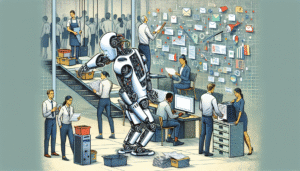
Maximizing Productivity in the Modern Workplace
Harnessing Technology for Peak Efficiency
Technology, while often touted as a distraction, is a powerful productivity tool when wielded correctly. Project management software like Asana, Trello, or Monday.com streamlines workflows, facilitates team collaboration, and provides clear visibility on project progress. Communication platforms like Slack and Microsoft Teams centralize discussions, reducing email clutter and enabling instant feedback. Cloud-based storage solutions like Google Drive and Dropbox offer seamless file access and version control, fostering collaboration and eliminating the need for cumbersome email attachments. Leveraging automation tools for repetitive tasks, such as email marketing automation or social media scheduling, frees up valuable time for more strategic initiatives.
Designing an Optimal Workspace
The physical workspace plays a crucial role in productivity. Ergonomic setups, including adjustable chairs, desks, and monitor placement, minimize physical strain and promote long-term well-being. Natural light boosts mood and energy levels, so positioning workstations near windows is highly beneficial. Incorporating plants into the office environment can improve air quality and reduce stress. Noise-canceling headphones or designated quiet zones offer respite from distractions and allow for focused work. A clean and organized workspace minimizes visual clutter, promoting mental clarity and reducing the time spent searching for misplaced items.
Mastering Time Management Techniques
Effective time management is paramount to productivity. The Pomodoro Technique, involving focused work intervals followed by short breaks, can enhance concentration and prevent burnout. Time blocking, scheduling specific tasks for dedicated time slots, provides structure and minimizes procrastination. Prioritizing tasks based on urgency and importance using methods like the Eisenhower Matrix ensures focus on high-impact activities. Regularly reviewing and adjusting schedules based on performance and unforeseen circumstances allows for adaptability and continuous improvement.
The Power of Effective Communication
Clear and concise communication minimizes misunderstandings and streamlines workflows. Establishing clear communication channels for different types of information prevents information overload and ensures messages reach the intended audience. Active listening, fully concentrating on the speaker and understanding their message, promotes effective collaboration and reduces the need for repetition. Providing constructive feedback, focusing on specific behaviors and their impact, fosters growth and improvement within the team. Utilizing visual communication tools like diagrams and flowcharts can enhance understanding and simplify complex information.
Cultivating a Positive Work Culture
A positive work environment fosters engagement and boosts productivity. Recognizing and rewarding employee contributions, both big and small, cultivates a sense of appreciation and motivates continued high performance. Encouraging open communication and feedback creates a safe space for idea sharing and problem-solving. Promoting work-life balance through flexible work arrangements and generous vacation policies reduces stress and prevents burnout. Team-building activities and social events strengthen interpersonal relationships and foster a sense of camaraderie.
Prioritizing Employee Well-being
Employee well-being directly impacts productivity. Encouraging regular breaks throughout the workday combats mental fatigue and promotes sustained focus. Providing access to wellness resources, such as gym memberships or mindfulness programs, demonstrates a commitment to employee health and well-being. Promoting healthy eating habits through subsidized healthy meal options or on-site cafeterias can improve energy levels and reduce health risks. Addressing mental health concerns by offering access to counseling services or employee assistance programs creates a supportive environment and reduces stigma.
Embracing Continuous Learning and Development
Investing in employee development enhances skills and boosts productivity. Providing access to online learning platforms or sponsoring industry conferences allows employees to stay abreast of the latest trends and technologies. Encouraging cross-training and mentorship programs facilitates knowledge sharing and skill development within the organization. Implementing regular performance reviews and providing constructive feedback identifies areas for improvement and guides professional growth. Creating a culture of continuous learning fosters innovation and adaptability in a rapidly evolving workplace.
Leveraging Data-Driven Insights
Data analysis provides valuable insights into productivity bottlenecks and areas for improvement. Tracking key performance indicators (KPIs) related to individual and team performance allows for objective assessment and identifies areas for intervention. Utilizing time tracking software provides granular data on how time is spent and reveals opportunities for optimization. Analyzing communication patterns and workflows can uncover inefficiencies and inform process improvements. Data-driven decision-making ensures that interventions are targeted and effective, maximizing the impact on productivity.
Promoting Flexibility and Autonomy
Offering flexible work arrangements, such as remote work options or flexible hours, caters to individual needs and promotes work-life integration. Empowering employees with autonomy and ownership over their work fosters engagement and increases job satisfaction. Providing opportunities for skill development and career advancement motivates employees to invest in their professional growth. Creating a culture of trust and accountability allows for greater flexibility and empowers employees to manage their own workloads effectively.
The Importance of Regular Breaks and Downtime
Taking regular breaks throughout the workday is essential for maintaining focus and preventing burnout. Short breaks, even just a few minutes to stretch or walk around, can significantly improve concentration and reduce mental fatigue. Encouraging employees to take lunch breaks away from their workstations promotes relaxation and social interaction. Disconnecting from work during evenings and weekends allows for mental rejuvenation and prevents burnout. Prioritizing rest and relaxation ensures employees return to work refreshed and ready to perform at their best.















